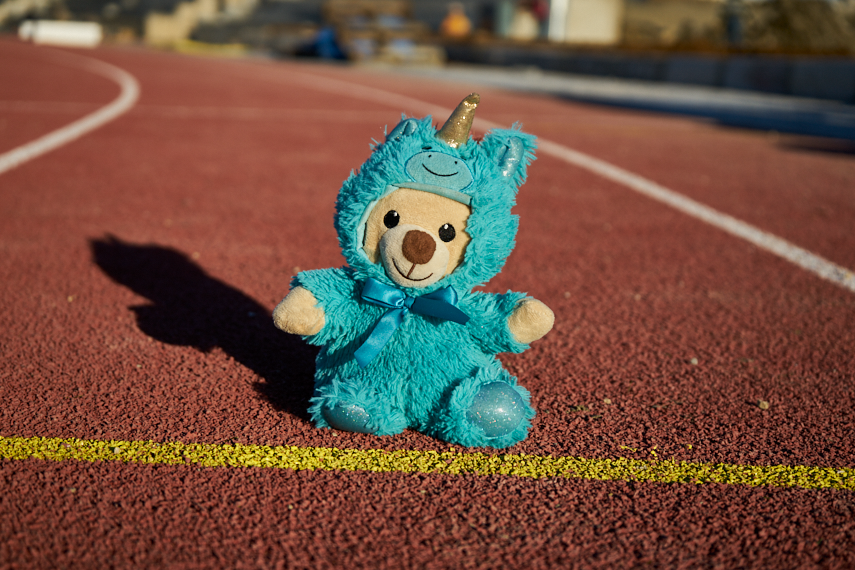Today, I suggest you dwell on the kinesthetic intelligence which has a special status in children. In fact, numerous studies have shown that, up to the age of 15, regardless of the child’s main type of intelligence, kinesthetic intelligence is highly developed and often takes the upper hand in its learning. . This explains, for example, that toddlers bring objects to their mouths, that children need to touch or handle something to understand it properly and that they have, on the whole, a immense need to move and explore the world with their 5 senses. No matter the dominant intelligence of a child, if one integrates movement, manipulation and more than one of the 5 senses in the proposed learning, one considerably increases its ease to acquire these new skills and knowledge. So to answer the question: “Is there really a learning method that can suit all children?”, Perhaps it would be worth further research in this direction, don’t you think? Besides, if you observe the greatest alternative pedagogies like Montessori, Reggio and Waldorf, schools in the forest, etc. you will quickly realize that this is one of the things they have in common. Interesting isn’t it?

So what is kinesthetic intelligence? It is the ability to use your body or part of it precisely to perform tasks that involve fine motor skills or gross motor skills. People with this type of intelligence learn optimally in a context where they are able to concretely experience their learning, get their hands dirty, manipulate, use their senses and move. They will use their bodies to communicate or express themselves, will often be attracted to the performing arts, handicrafts or the visual arts and will excel in sports. In children, this main type of intelligence will be observed regularly in children who quickly have good body control, who develop in sports, who love DIY or fine motor activities. They are agile, strong and love acrobatics and gymnastics. These are often children who have a great need to manipulate something when they listen in order to concentrate better and who need to move more than others during the day. It should be noted that in certain cases, if the child’s need to move is not met, one could confuse his inability to remain motionless with an attention deficit hyperactivity disorder. It is therefore important to make sure your child has enough free time to move around in the day to avoid this confusion.
People whose main intelligence is kinesthetic intelligence will often be attracted to artistic professions such as craftsman, carpenter, dancer, acrobat or actor or professions such as mechanic, plumbers, physical education teachers or a career in a sports.
Ideas for developing this type of intelligence in a child of which it is the dominant intelligence:
- Provide him with his own small toolbox and show him how to use the tools properly. Then let him create and invent things for himself. He will learn a lot this way.
- It is often children who need to understand how things work. Is the toaster broken? Do you have a flashlight at home that you can easily dismantle? Let him find out how it’s done inside and invite him to do some research to understand it. Who knows, maybe your toaster will work again.
- Leave DIY materials at your fingertips at all times and allow them to explore them, without instructions or constraints.
- Homework period is difficult? Why not learn its additions by doing the number of hops corresponding to the answer or spell a word by assembling wooden or plastic letters rather than by writing them on a sheet? Adding movement and manipulation to your child’s learning will make homework a lot easier. For older children, invite them to take short breaks every 15-20 minutes by doing some “jumping jack” or by running on the spot for example.
- Learn to juggle! It will also allow him to develop his memory and his ability to concentrate. And he can use this method during his short breaks between his periods of homework and lessons. https://www.youtube.com/watch?v=9Xb_VPyLlRA&t=67s
- Let him play freely outside as often as possible. He needs to exercise in his own way.
- Register him for sports or artistic activities according to his interest.
To develop this type of intelligence in a child in whom it is not dominant.
As I said above, this type of intelligence is very present in all children up to the age of 15. So all the above points can be used with your child. And the ones I present to you here will probably also be appreciated by children who are the dominant type of intelligence.
- From early childhood, offer your child sensory bins to help him stimulate his fine motor skills. (see link at the end of the article for ideas). For infants, offer them a basket containing everyday objects that they can handle and bring to their mouth without danger (wooden spoon, large rubber ball, brush or comb, sponge, etc.).
- Have fun creating motor skills, go outside, go play in the park, take a walk in the forest, climb trees, go cycling, skate or play ball with the family. Get moving!
- Offer DIY materials to your child, plasticine, beads to put on or materials with special instructions, or give them suggestions for use. Then gradually, as he gains experience, confidence and develops his imagination, offer him materials without specific objectives so that he can create his own crafts and explore with his pace.
- Play mime games, mini plays or tell stories with gestures.
Interesting links:
Sensory bins: https://www.pinterest.ca/jencie1978/sensorial-bin/
Interesting sites for DIY ideas:
La tête à modeler: https://www.teteamodeler.com/boiteaoutils/index.asp
Parents momes: http://www.momes.net/Bricolages
Interesting sites for DIY ideas: aHugo the snail (I want to clarify that I share this site because it contains a lot of very interesting and free material. However, I totally disapprove of the DIY section for girls. For me, DIY don’t have sex!) https://www.hugolescargot.com/activites-enfants/bricolages/